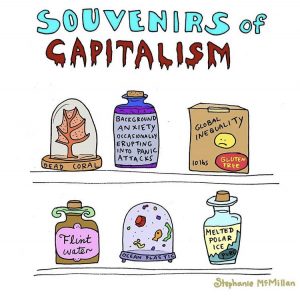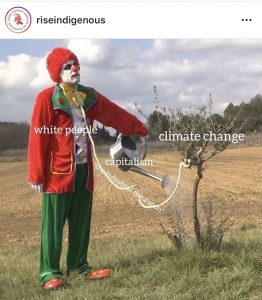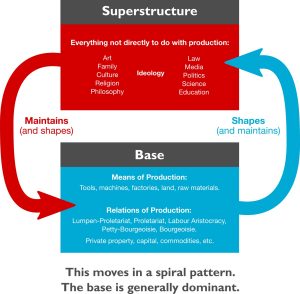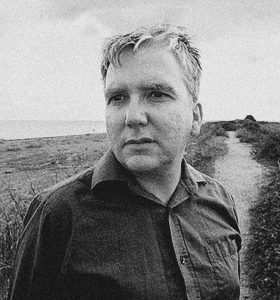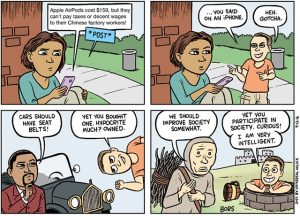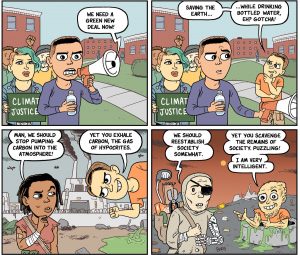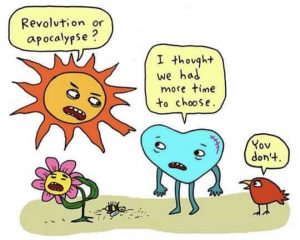It would be foolish to talk about the Anthropocene and the future of Earth without talking about Capitalist Realism.
In Anthropocene: A Very Short Introduction (2018), Erle C. Ellis defines Anthropocene: “we humans, the Anthropos, have so greatly altered Earth’s functioning that scientists now propose to recognize this with a new interval of geographic time: the Anthropocene.” The Anthropocene- a working title- is essentially the Age of Humans, where we have touched and changed every part of the Earth whether directly or indirectly. Take the human invention of plastic, for example. A convenient and cheap material to produce, great for business! use once or twice, and then… throw away We’ve found plastic bags at the bottom of the Mariana Trench. We’ve found stones made out of plastic, the future of fossils. There are islands of plastic floating around in the Pacific Ocean. The impact of single-use plastic on our environment alone is devastating, but it gets produced, sold, and bought anyway.
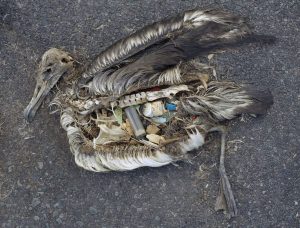
Chris Jordan for National Geographic
How did we get here?
More urgently, where do we go from here?
The reality is that we weren’t always so disconnected from our ecosystem, and we don’t have to live this way. Indigenous communities worldwide for time immemorial have lived and continue to live in entirely sustainable ways. In May of 2019, the United Nations said what Indigenous peoples have been saying for years, that Indigenous sovereignty and leadership is the path forward if we want to survive:
The U.N. assessment comes on the heels of startling climate reports that have alarmed much of the world, but it also illuminates a path forward for humanity: While humans have “significantly altered” about three quarters of land-based environments and two-thirds marine environments, these trends have been less severe or avoided altogether in areas held or managed by Indigenous peoples and “local communities.”
Mike Ludwig, “UN Report Says Indigenous Sovereignty Could Save the Planet”
So why haven’t we adopted more sustainable ways of living when we have thousands of people all around the world to show us exactly how to do it? In short, the global domination of Capitalist and Neoliberal ideology that maintains our self-destructive way of life.
In his 2018 In These Times article, Is Neoliberalism Making Our Depression and Anxiety Crisis Worse?: How Capitalist Culture is Making Us Sick, British journalist Johann Ari writes that “Neoliberalism does a very poor job of meeting [our] psychological needs, in part because its theory of human nature doesn’t match with human nature. All humans crave connection- to other people, to meaning, to the natural world.” You can read more about Neoliberalism in the next tab but to put it briefly, Neoliberalism is the ideology that Capitalism as a mode of production upholds and in turn, is legitimized by.
This relationship is that between which Karl Marx called the Superstructure and the Substructure or Base. The superstructure has to do with Ideology: our ideas about culture, religion, politics, you name it! Just anything not to do with production. The base describes people’s relation to the means of production. It maintains the superstructure, meaning that the way people work shapes how they engage in their culture and how they see themselves. The way people engage in and create culture forms ideology, which in turn upholds modes of productions. As media theorist Walter Benjamin writes in The Work of Art in the Mechanical Age of Reproduction,
“the transformation of the superstructure, which takes place far more slowly than that of the substructure, has taken more than a half a century to manifest in all areas of culture the change in the conditions of production.”
It already takes time to change from one mode of production to another, but it takes much longer to change our ideologies. The issue of this in the Anthropocene? At the beginning of a climate catastrophe? We don’t have much time left to change our mode of production, and our current global ideology of Neoliberalism is committed to legitimizing Capitalism as a mode of production. Neoliberalism upholds Capitalist realism, insisting that Capitalism is all we have and that the free market is the same thing as freedom itself. However, Capitalism without a doubt has led us to not only the Anthropocene itself but to the edge of Climate Catastrophe:
“The relationship between capitalism and eco-disaster is neither coincidental nor accidental: capital’s ‘need of a constantly expaninding market’, its ‘growth fetish’, mean that capitalism is by its very nature opposed to any notion of sustainiability.”
– Mark Fisher, Capitalist Realism (19)
We have arrived at the Anthropocene, at the edge of our own destruction, due to the inherently destructive nature of capitalism and the violent ideology that upholds it. Capitalist Realism, an ignorant commitment to Capitalism as our only choice even in the face of our own extinction, is just as life-threatening as capitalism itself.
